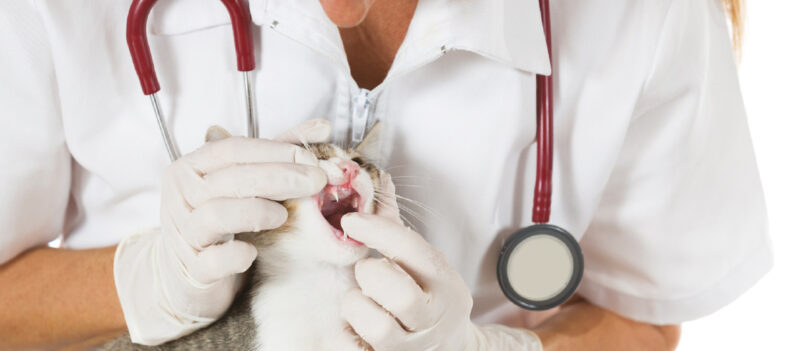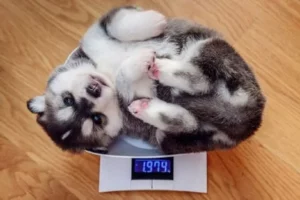The pet’s general health depends heavily on their oral health, which can either cause or be affected by other health issues. Over the age of 7, 80% of cats and dogs have serious dental issues. We are responsible for maintaining the oral and dental health of our pets. Many pets may have chronic pain and suffering as a result of poor dental care. When animals are in such pain, they usually do not scream out, but bear it. Unfortunately, most owners have no awareness of this pain.
Bad breath is one of the simplest signs of dental illness. Your pet’s breath shouldn’t always be fresh, but it also shouldn’t be so awful that it makes you sick. Don’t neglect a musky smell emerging from Fluffy’s lips. This might be a red flag for periodontal disease or another oral ailment like stomatitis, a frequent feline condition that causes excruciating gum and mouth tissue inflammation.
An infection in the mouth can allow germs to enter the bloodstream, which may lead to diseases elsewhere in the body. Poor dental hygiene can lead to lung, liver, kidney, heart, and other illnesses. Throughout your pet’s life, preventive dental care can lessen the accumulation of plaque and tartar, which can cause gingivitis, dental disease, and systemic illnesses that can shorten your pet’s lifespan. The veterinarian should examine your pet’s teeth and gums at least once a year to look for any problems early on and to maintain your pet’s oral health.
Maintaining the pet’s oral health
Brushing your pet’s teeth can help prevent dental problems. The purpose of doing this is to stop plaque (Plaque is at the root of most dental problems in pets) from turning into tartar. The greatest way to keep teeth clean is to brush them regularly. Whenever possible, prevention is preferable to cure. A range of choices are accessible, such as:
- In general, both cats and dogs are amenable to cleaning their teeth, especially if it becomes a ritual early on. You can clean your teeth using a toothbrush or your finger.
- Specialised dental cleaning (to remove plaque and calculus)
- Dental diets with scientific merit
- Suitable chews
- Brushing teeth
- Particularly for dogs, chew toys and dental chews may be very beneficial and practical. Despite the fact that there are certain chews available, cats often aren’t that interested in them.
In order to prevent stomach upset in animals, you should use pet toothpaste.
“Human toothpaste is not designed to be swallowed by animals.”
Is your pet suffering from bad teeth?
The mouth of your pet should be the first place you look. Bad breath, or halitosis, could be the first thing you notice. Since germs in the mouth are what cause halitosis, it may serve as a warning sign for dental illness.
The hard, dark buildup on teeth known as tartar. It is carried on by the mineralization of plaque, which is relied on by oral bacteria attacking food particles.Tartar buildup can result in gingivitis (gum inflammation). The gums start to swell, bleed easily, and turn red. The most prevalent dental ailment in dogs and cats is periodontal disease, which is very likely present by the time your pet is 3 years old. If proper preventative measures aren’t done, the illness will develop as your pet ages, in which the inflammation produces infection and degeneration of the tissue around the tooth, is likely to be brought on by persistent tartar and gingivitis.
Affected teeth get looser and might eventually disappear. Animals may only feed with one side of their mouths, lose weight, or otherwise fail to flourish if the condition is severe. Particularly older cats may begin to seem scruffy as they begin to less eagerly brush themselves.
Signs of dental and oral conditions in cats and dogs




- poor breath
- loose teeth, teeth that are stained, or teeth that are tartar-coated.
- When you touch the mouth area, your pet runs away from you.
- dropping food from the mouth or drooling.
- Blood coming out of his lips.
- Loss of appetite or weight loss (this combination can result from diseases of many organs, and early veterinary examination is important).
- Yellow or brown crust on tooth surface.
- Chaning in chewing habits.
Periodontal disease
Adult dogs and cats are most frequently affected by periodontal disease, which is completely avoidable. Most dogs and cats have periodontal disease by the time they are 3 years old. Sadly, other from poor breath, there aren’t many symptoms of the disease process that are visible to the owner, and periodontal treatment and professional dental cleaning frequently occur too late to stop severe disease or save teeth.
Periodontal disease is frequently not treated properly as a result, and it can occur in a variety of issues with the oral cavity as well as harm to internal organs in certain people as they age. Plaque, a material made by oral bacteria that clings to the teeth’s surface, is the first sign of periodontal disease. Minerals in the saliva next harden the plaque into dental calculus (tartar), which is tightly bonded to the teeth. Even though many owners might notice that there is tartar above the gum line, this is not in and of itself the cause of illness.
Stages of periodontal disease are categorised. Gingivitis and periodontitis are not visible in teeth with healthy periodontal tissues.
- Stage 1: There is simply gingivitis, no attachment loss, and the alveolar margin’s height and structure are both normal.
- Stage 2: Early periodontitis symptoms can be seen on radiographs. According to radiographic measurements of the alveolar margin’s distance from the cementoenamel junction in relation to the length of the root or by probing the clinical attachment level, the loss of periodontal attachment is 25%.
- Stage 3: Moderate periodontitis with 25% to 50% attachment loss as determined by radiographic measurements of the alveolar margin’s distance from the cementoenamel junction in relation to the length of the root or by probing the clinical attachment level.
- Stage 4: Advanced periodontitis with >50% attachment loss as determined by radiographic measurements of the alveolar margin’s distance from the cementoenamel junction in relation to the length of the root or by probing the clinical attachment level.
Gingivitis and inflammation and reddening of the gums, is a form of periodontal disease, as is periodontitis (loss of bone and soft tissue around the teeth). Periodontal disease has a wide range in look and severity, making it frequently necessary to sedate the animal in order to effectively diagnose or treat it. Damage to or loss of the bone surrounding the teeth, the formation of a hole (fistula) from the oral cavity into the nasal passages that causes nasal discharge, fractures of the jaw due to the weakening of the jaw bone, and bone infection are all effects that occur inside the oral cavity (osteomyelitis). Mouth bacteria may get into the circulation and travel all around the body. Studies on pups have revealed a link between periodontal disease and microscopic abnormalities in the heart, liver, and kidneys. Periodontitis requires more aggressive periodontal treatment.
How do you treat a pet with dental disease?
A comprehensive dental examination that includes tooth cleaning and/or extraction can be done by a veterinarian. Given that it will make your pet more comfortable, this is carried out under anaesthetic.
Keep in mind that maintaining your pet’s teeth in the same manner as your own is the greatest method to prevent any dental diseases. Your pet’s teeth will remain strong and healthy with the aid of regular dental examinations by the veterinarian, including biscuits in meals, chew toys or dental sticks, and brushing.

![03- PET DENTAL HEALTH[1140 × 500px] 03- PET DENTAL HEALTH[1140 × 500px]](https://ivhq8.com/wp-content/uploads/elementor/thumbs/3-dental-health-pyuoscsv5s30n13qg69rccaxi5gqen2yqd1my5et8o.jpg)


